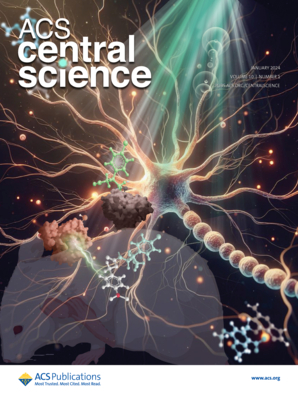Promoting CO2 electroreduction activity of porphyrinic conjugated microporous polyanilines via accelerating proton transfer dynamics
IF 12.7
1区 化学
Q1 CHEMISTRY, MULTIDISCIPLINARY
引用次数: 0
Abstract
Conjugated microporous polymers (CMPs) with π-conjugated framework, inherent porosity and tunable structure have been considered as the promising platforms as electrocatalysts for carbon dioxide reduction reaction (CO2RR). Promoting the proton transfer dynamic to modulate microenvironment of active sites in CMPs plays an important role on the improvement of their electrocatalytic activity. Herein, we developed a series of novel porphyrinic conjugated microporous polyanilines (CMPANI-n) constructed from tetrabromo-cobalt(II) porphyrin and diamino aromatics by the Buchwald–Hartwig coupling polymerization approach. Owing to the three-dimensional geometry of these polymeric skeleton, microenvironment of catalytic CoN4 site could be readily regulated by incorporation of nitrogen-doped diamino aromatic, leading to the enhancement of electrocatalytic activity for the carbon monoxide (CO) production. Notably, pyrazine-containing CMPANI (CMPANI-3) shows the high CO Faradaic efficiency (FECO) (97 % at −0.7 V vs. RHE), excellent turnover frequency (TOF) (2264 h−1 at −0.7 V vs. RHE) and large current density (>200 mA cm−2). The kinetic isotope effect results indicate that the pyrazinyl-N in CMPANI-3 facilitates the efficient proton absorption and transfer. Moreover, in-situ Fourier transform infrared spectra demonstrate that the protonated pyrazinyl-N would promote the generation and stabilization of *COOH intermediate via the coordination interaction around CoN4 site, thus favoring the electroreduction of CO2-to-CO conversion. This work provides a new sight in the design of polymeric electrocatalyst system with superior electron and proton transport for boosting CO2RR applications.通过加速质子转移动力学促进卟啉共轭微孔聚苯胺的二氧化碳电还原活性
具有π-共轭框架、固有孔隙率和可调结构的共轭微孔聚合物(CMPs)已被视为二氧化碳还原反应(CO2RR)的电催化剂平台,前景广阔。促进质子传递动力学以调节 CMPs 中活性位点的微环境对提高其电催化活性具有重要作用。在此,我们开发了一系列新型卟啉共轭微孔聚苯胺(CMPANI-n),它们是由四溴钴(II)卟啉和二氨基芳烃通过布赫瓦尔德-哈特维格偶联聚合法构建而成。由于这些聚合物骨架的三维几何形状,催化 CoN4 位点的微环境可通过加入掺氮的二氨基芳香族化合物进行调节,从而提高了一氧化碳(CO)生成的电催化活性。值得注意的是,含吡嗪的 CMPANI(CMPANI-3)显示出较高的一氧化碳法拉第效率(FECO)(-0.7 V 对 RHE 时为 97 %)、出色的周转频率(TOF)(-0.7 V 对 RHE 时为 2264 h-1)和较大的电流密度(>200 mA cm-2)。动力学同位素效应结果表明,CMPANI-3 中的吡嗪基-N 促进了质子的有效吸收和转移。此外,原位傅立叶变换红外光谱表明,质子化的吡嗪基-N 会通过 CoN4 位点周围的配位相互作用促进 *COOH 中间体的生成和稳定,从而有利于 CO2 到 CO 的电还原转化。这项工作为设计具有优异电子和质子传输性能的聚合物电催化剂系统提供了新的视角,从而促进 CO2RR 的应用。
本文章由计算机程序翻译,如有差异,请以英文原文为准。
求助全文
约1分钟内获得全文
求助全文
来源期刊

ACS Central Science
Chemical Engineering-General Chemical Engineering
CiteScore
25.50
自引率
0.50%
发文量
194
审稿时长
10 weeks
期刊介绍:
ACS Central Science publishes significant primary reports on research in chemistry and allied fields where chemical approaches are pivotal. As the first fully open-access journal by the American Chemical Society, it covers compelling and important contributions to the broad chemistry and scientific community. "Central science," a term popularized nearly 40 years ago, emphasizes chemistry's central role in connecting physical and life sciences, and fundamental sciences with applied disciplines like medicine and engineering. The journal focuses on exceptional quality articles, addressing advances in fundamental chemistry and interdisciplinary research.
 求助内容:
求助内容: 应助结果提醒方式:
应助结果提醒方式:


